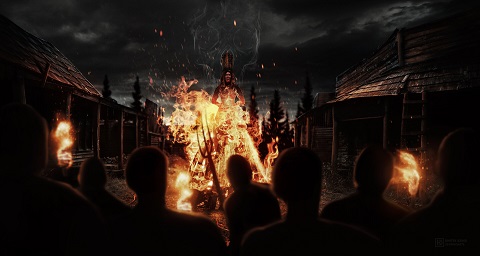This is mark Joseph “young” blog entry #509, on the subject of Character Challenges.
With permission of Valdron Inc I have previously completed publishing my first ten Multiverser novels,
- Verse Three, Chapter One: The First Multiverser Novel,
- Old Verses New,
- For Better or Verse,
- Spy Verses,
- Garden of Versers,
- Versers Versus Versers,
- Re Verse All,
- In Verse Proportion,
- Con Verse Lea, and
- In Version, in collaboration with Eric R. Ashley,
in serialized form on the web (those links will take you to the table of contents for each book). Along with each book there was also a series of web log posts looking at the writing process, the decisions and choices that delivered the final product; those posts are indexed with the chapters in the tables of contents pages. Now as I am posting the eleventh, Con Version, again written in collaboration with Eric R. Ashley, I am again offering a set of “behind the writings” insights. This “behind the writings” look may contain spoilers because it sometimes talks about my expectations for the futures of the characters and stories–although it sometimes raises ideas that were never pursued, as being written partially concurrently with the story it sometimes discusses where I thought it was headed. You might want to read the referenced chapters before reading this look at them. Links below (the section headings) will take you to the specific individual chapters being discussed, and there are (or will soon be) links on those pages to bring you back hopefully to the same point here.
This is the seventh post for this novel, covering chapters 73 through 84. Previous mark Joseph “young” behind-the-writings web log posts for this book include:
- #498: Characters Restart covering chapters 1 through 12;
- #501: Characters Orienting, covering chapters 13 through 24;
- #502: Verser Setbacks, chapters 25 through 36;
- #503: Versers Progress, chapters 37 through 48;
- #505: Versers Advance, chapters 49 through 60; and
- #506: Characters Involved, chapters 61 through 72.
There is also a section of the site, Multiverser Novel Support Pages, in which I have begun to place materials related to the novels beginning with character papers for the major characters, giving them at different stages as they move through the books. This is also the longest book to date, and has quite a few long chapters in it, so there will be quite a few of these background articles.
History of the series, including the reason it started, the origins of character names and details, and many of the ideas, are in earlier posts, and won’t be repeated here.
Quick links to discussions in this page:
Chapter 73, Brown 307
Chapter 74, Cooper 24
Chapter 75, Brown 308
Chapter 76, Takano 108
Chapter 77, Brown 309
Chapter 78, Cooper 25
Chapter 79, Takano 109
Chapter 80, Brown 310
Chapter 81, Cooper 26
Chapter 82, Takano 110
Chapter 83, Brown 311
Chapter 84, Cooper 27
I suggested that we needed a chapter to fill in an ordinary December before we hit Yule, so Eric drafted this.
He left gaps for me to fill in music, and I picked I Heard the Bells because it comes from the Civil War.
There was also a question about the Rougarou, Eric having written that Emma Malcolm had mentioned it, and I not recalling that but thinking she had only suggested trouble coming at Yule. We discussed it, and went back to Brown 303, later bumped to 304, to add it.
Reading Eric’s section on the Biloxi hurricane, I suggested expanding to include questions of the mayor’s integrity, and eventually added several paragraphs for that.
We had a lot of discussion concerning the locale of our superhero setting. Eric wanted to avoid New York City mostly because everyone uses it. I wanted it to be close to the mountains because of the equipment problem. We agreed on somewhere in the Rockies, and by the time Eric wrote this we had agreed on southern Colorado, in the area currently labeled the Rio Grande National Forest. I suggested that John Muir and Theodore Roosevelt never met, and so the national parks and forests systems were never launched. Eric brought forward the possibility that some supervillain might plan to do something with the volcano under Yellowstone.
I rewrote much of this. Eric had overlooked the fact that there would be no light in the library until the power was restored, and when that happened there was at least every reason for Brian to believe the force field would reactivate. His take was that Brian would eventually find the force field generator, which would have been built of components he did not recognize but melted mostly to slag as a single-use device. My view was that it would have been built of components available in the 1950s, and so look very like the inside of a radio or old television with vacuum tubes and such, and would be plugged into the wall somewhere.
We were also uncertain whether he would get anything else from the house, or indeed whether the house would be left to him. Eric decided to give him a few things and leave everything else to family. That meant that he would have to leave the house, and couldn’t take the device with him.
I also am old enough to remember how you call the police in the 1950s.
When it appeared that the Brown story was reaching the deadline date without having achieved sufficient backstory, I inserted this chapter as a space to be filled. I was brainstorming for story ideas, but for a time the only one was to have a white boy assault a black girl and apparently get away with it.
The insertion of course shifted all subsequent chapter numbers and Brown chapter numbers plus one, which made plus two.
Returning from the hospital, I began re-reading the entire book to get back into the sense of things, and saw that in what became Brown 309 Eric had mentioned that one of the bands at Yule was a mixed-race band. I immediately balked at this–mixed race bands were unknown before about the 1950s or 60s–but then thought this could work if 2) the existence of that band was emphasized and 1) if they could set up some kind of event which suggested that Living Colors was responsible for it. That was my objective here.
Eric drafted this to give us more of a feeling of struggling through the winter, and to give Tommy bowhunting experience.
We had agreed that Yule was coming, and the band would face the Rougarou, which would be rampaging through the city. Eric put it together with a bit of tweaking from me.
Trying to figure out what Cooper could do with his grocery bags, I considered a hotel room, which would require money, which meant selling one of the gold coins from the money belt. This put me on a search for the price of gold in the 1950s and the value of money at that time, and while I was working on that it occurred to me that a bus locker would be adequate to the purpose, for which he would still need money, but then I remembered that the equipment sheet Eric had provided included a few coins, and while they weren’t legal tender they were the right shape and weight for a coin machine, and particularly the nickel, which had not changed much. So by the time he had finished this chapter we knew what the gold coins were worth in the money of the time, and what that meant in terms of purchasing power, even though at that point we didn’t need it.
Eric picked up the story to create the Blackmask Gang encounter, which I tweaked a bit to eliminate a problem with reopening and relocking the locker.
Eric had left the hunt in the middle, and after reading it I thought that the hunters were probably killing deer rather indiscriminately, and remembered that one of the rules of modern hunting is you prefer the bucks. If you kill enough does and fawns you reduce the deer population drastically, but as long as you have one or two surviving bucks you get another generation.
Picking up from this, Eric drafted this chapter, putting the problem directly in Tommy’s face.
I commented about here that it often seemed we were playing Multiverser, that Eric would create a situation and wait for me to figure a way out of it. That, though, created interesting stories, so it was good.
Puzzling over the problem set up at the end of Brown 309 (previously 307), I considered and rejected the same solutions I wrote for Derek, and for the same reasons. However, when I thought about having Derek turn into a sprite, it struck me that a sprite looked like a tiny angel, and he could use that to his advantage, except that before he could become Morach he would have to become Ferris, who looks more like a gargoyle than anything else. That, though, got me thinking. The body skill Derek uses lets him reduce himself by up to half in every dimension, and increase himself by as much as doubling in every dimension, done by thinking of the person he is when that size. The only reason he couldn’t get larger or smaller ultimately is that he doesn’t have a named persona conceptualized for those sizes. Could he imagine such a persona, give it a name, and become that person? I posed it to Eric, and separately to John Walker (on whom the James Beam character is based, who has been playing since before the game was published), and while both were hesitant, both agreed it was possible, and so I drafted it into the story here.
Eric had to do a bit of editing at the end because I got the geography wrong, not realizing that Alphonso had left the stage.
I had left a note for Eric concerning the trip ahead, and in the process composed the meeting with The Eagle, including most of the conversation and the mention of William Tell Junior. He came back the next day and covered the hike very briefly, going directly to the meeting, and adding a few bits including the motorcycle and the offer of a ride to the city.
The comment about why it wasn’t a National Park is of course one of the differences between universes: in our world, this location is the Rio Grande National Forest, but we eliminated the National Parks system and put a city on the river here.
I drafted this, and as soon as I finished it I realized that I had thought Davey would be at the meeting and forgot to include him, so I mentioned it to Eric who went back and tweaked it to include him.
I thought it was important for Derek and Vashti to go back and thank the bull for his hospitality, and that it would only be meaningful if they had treats. I also thought that the restaurant would be closed on Christmas, recalling that so many people attended church on Christmas day back then that they had to make it a Federal holiday because of all the call-outs. That also meant that the members of the band would be in church. Pierre would be Catholic because it’s the leading religion in France, Maurice Baptist because that was strong among southern Blacks, and a lookup confirmed that Presbyterians were a strong group in China around 1900.
Eric drafted this, but I swept through and made a lot of suggestions for changes, because we had a different notion of when Cooper would change out of his uniform, Eric having it done at the bus station and so revealing his identity to The Eagle, I keeping him in costume until in the room so he could keep that secret. I also expanded the dialogue at the front desk, and this led to questions about later parts of the chapter. We agreed on a cooperative rewrite of portions to accommodate this.
This has been the seventh behind-the-writings look at Con Version. If there is interest and continued support from readers we will endeavor to continue with more behind-the-writings posts and another novel.










